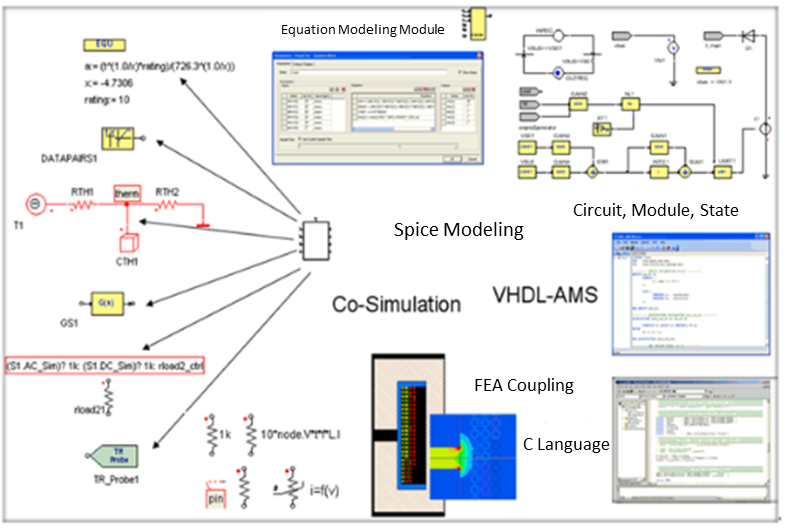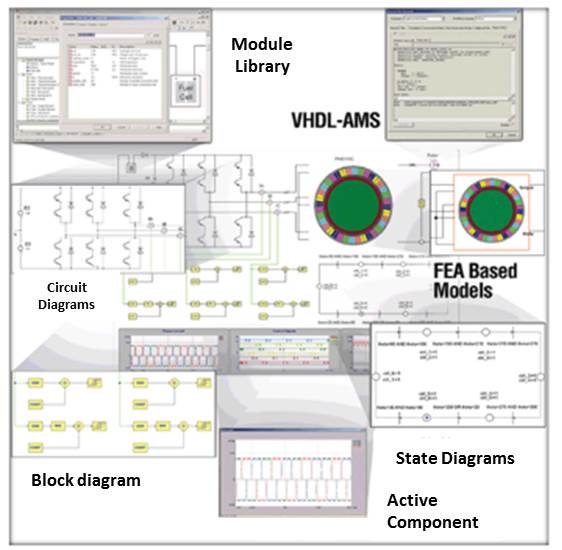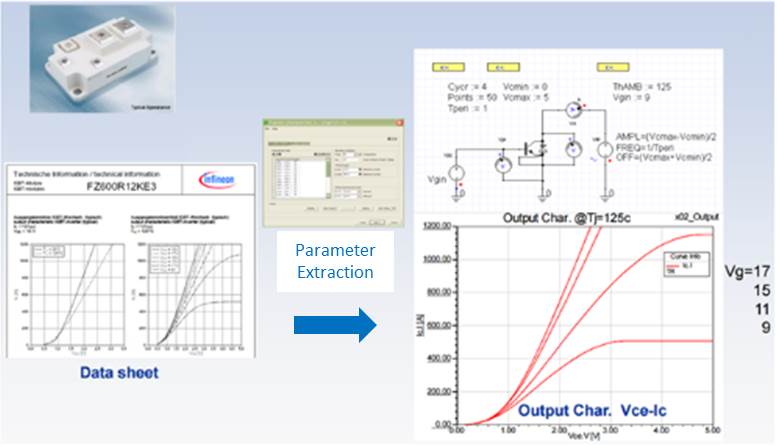From modeling, simulation to the analysis virtual systems, Ansys Twin Builder is equipped with comprehensive modules, multi-disciplinary applications and functions, design ability of multi-layer systems, flexible modeling tool, 2D and 3D multi-dimensional simulation, and embedded software design, providing the users a simulation platform with powerful functions that can be used in electrical, electromagnetic, automated control, aerospace, industrial automation, and other fields.
Physical prototype modeling
Twin Builder can be integrated with Ansys and other electromagnetic simulation software, including SCADE, Ansys Maxwell, Ansys CFD, Ansys Q3D Extractor, Ansys RMxprt, Ansys PExprt, Ansys HFSS, Ansys SIwave, Ansys Icepak, Ansys Rigid Dynamics, Ansys Mechanical, etc. The physical prototype modules are imported through embedding, ROM, co-simulation, FMI tools, and other technologies, which can extract detailed and accurate parameters, showing the system design with high precision.

Integrated development environment
Twin Builder has several modeling technologies that can be imported into circuit diagrams, block diagrams, state diagrams, and equations created by different software. It supports models exported by MATLAB, Spice, Mathcad, and other various modeling software. Twin Builder can support different modeling technologies within the same design project and can conduct modeling and simulation at the same time. In terms of the modeling of analog, digital, and digital-analog hybrid systems, mathematics and model conversions are required for the traditional single-point design. However, this hybrid modeling method can flexibly avoid the differences generated by the conversions, which will greatly increase the modeling accuracy.

Multi-language modeling
Twin Builder not only supports multiple modeling software but also different programming languages for modeling, such as VHDL, VHDL-AMS, SML, Modelica, MATLAB, Mathcad, Fortran, and C/C++. VHDL-AMS is a descriptive language for mixed-signal circuits, suitable for complex hybrid signal and integrated circuits. It applies to modeling in electrical, electromechanical, thermal, hydraulic, and electromagnetic fields. SML is a Twin Builder exclusive modeling language.

Statistical analysis and optimization
Twin Builder offers parameter sweep analysis, Monte Carlo statistical analysis, sensitivity analysis, and coordination analysis. During the design process, continuous non-linear programming design, continuous mixed-integer non-linear programming design, and algorithms can be used to optimize the models. Several graphics can be exported with the simulation results, such as 2D/3D graphs, 2D/3D polar coordinate graphs, digital oscillogram, Bode plots, Nyquist plots, and others. The powerful post-processing function allows the users to conveniently export several analytical reports and graphics.
Featured modeling tools
The impacts of parasitic circuits are usually ignored in IGBT and SMPS modeling, which leads to simulation inaccuracy. Powerful featured modeling tools are developed for Twin Builder tailored for MOSFET, IGBT, diode, and SMPS, achieving featured modeling according to the datasheet provided by the suppliers. Different feature parameters and characteristic curves are included in the modules so that the users can directly use the in-built IGBT half-bridge test circuit and system model, resulting in an enhancement in the IGBT switch featured testing and performance analysis ability.
The users can choose the average featured parameters of the components to shorten the simulation time or to directly describe the circuit’s logic and timing by opting for the hardware description language or advanced modeling language, which can accurately describe the dynamic behaviors of the circuits.

Multi-disciplinary applications and functions
Twin Builder supports different modeling languages and technologies. It comes with comprehensive modeling tools, acting as a multi-layer system simulation integration platform that can be used in an extensive number of disciplines, including electrical, power electronics, electromagnetics, motors, automatic control, electromechanical control, vehicles, and other fields.
.png)
Decentralized analysis
Twin Builder has several analytical tools, including the six sigma, statistical analysis, parameter analysis, etc. Generally, these large-scale simulation analyses would occupy a considerable amount of computing resources. However, Twin Builder can effectively utilize the available resources through multi-core decentralized computing to achieve large-scale parameterization and optimization of the design solution, then quickly execute the computing and performance analysis.
.png)
Co-simulation capability
Twin Builder supports C/C++, MATLAB/Simulink, Modelsim, QuestaSim, Mathcad, Modelica, and many other modeling languages. Various template modules can be developed with their powerful environmental and design capability, and they can all be shared by different users. The modules developed in this modeling environment can avoid conversions in the models and allow other users to simplify the design procedure, promoting the communication and model exchanges between OEM, suppliers, and the vast users.
Twin Builder supports C/C++, MATLAB/Simulink, Modelsim, QuestaSim, Mathcad, Modelica, and many other modeling languages. Various template modules can be developed with their powerful environmental and design capability, and they can all be shared by different users. The modules developed in this modeling environment can avoid conversions in the models and allow other users to simplify the design procedure, promoting the communication and model exchanges between OEM, suppliers, and the vast users.
Script function
By using simple instructions, you can deal with a series of complex actions. Array, loop, condition, logical judgment, and others are included in the script functions. Twin Builder’s powerful script functions are enabled as you open the application interface in the simulation environment, embed the Twin Builder in the existing design process of the user.
Twin Builder’s powerful script functions are not limited by the language, universal script languages such as VisualBasic® and Java® are all permitted. It can also support other Microsoft’s general interface software or design tool.
